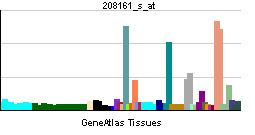Entrez 8714 | Ensembl ENSG00000108846 | |
 | ||
Aliases ABCC3, ABC31, EST90757, MLP2, MOAT-D, MRP3, cMOAT2, ATP binding cassette subfamily C member 3 External IDs MGI: 1923658 HomoloGene: 68364 GeneCards: ABCC3 | ||
Canalicular multispecific organic anion transporter 2 is a protein that in humans is encoded by the ABCC3 gene.
Contents
Function
The protein encoded by this gene is a member of the superfamily of ATP-binding cassette (ABC) transporters. ABC proteins transport various molecules across extra- and intra-cellular membranes. ABC genes are divided into seven distinct subfamilies (ABC1, MDR/TAP, MRP, ALD, OABP, GCN20, White). This protein is a member of the MRP subfamily which is involved in multi-drug resistance. The specific function of this protein has not yet been determined; however, this protein may play a role in the transport of biliary and intestinal excretion of organic anions. Alternatively spliced variants which encode different protein isoforms have been described; however, not all variants have been fully characterized.
ABCC3 is induced as a hepatoprotective response to a variety of pathologic liver conditions. The constitutive androstane receptor, pregnane X receptor and nuclear factor (erythroid-derived 2)-like 2 (Nrf2) transcription factors are involved in mediating induction. A functional antioxidant response element in the 8th intron of the human ABCC3 gene appears responsible for Nrf2-mediated induction in response to oxidative stress.
Interactive pathway map
Click on genes, proteins and metabolites below to link to respective articles.
